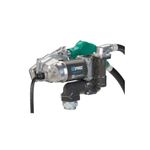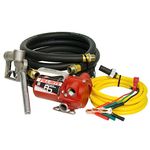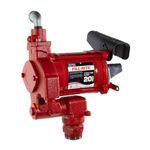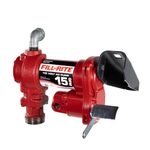10 bestFuel Transfer Pumpsof December 2025
112M consumers helped this year.
1
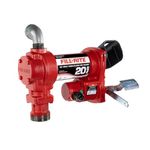
Fill-Rite FR4204H 12V 20 GPM Fuel Transfer Pump (Pump Only)
Fill-Rite

9.8
2
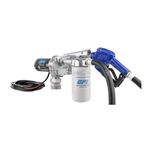
GPI - M-150 Series Fuel Transfer Pump, Automatic Shut-Off Nozzle with Filter Kit, 15 GPM, 12 Volt (110612-03)
GPI

9.6
3
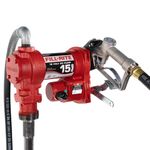
Fill-Rite FR1210H 12V 15 GPM Fuel Transfer Pump w/Discharge Hose & Manual Nozzle
Fill-Rite

9.5
4
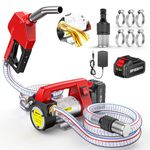
TaskStar Fuel Transfer Pump Battery Powered, 21V DC Cordless Diesel Transfer Pump Kit w/ 1X4.0Ah Battery, 12GPM Portable Self-Priming Diesel Pump Kit w/Nozzle&Hose Auto Shut Off for Diesel & Kerosene
TaskStar

9.3
5
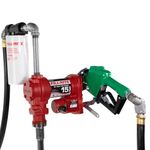
Fill-Rite FR1220HDSFQ 12V 15 GPM Fuel Transfer Pump w/Premium Filter Package
Fill-Rite

9.0
Other
5% off
6

Orion Motor Tech Diesel Transfer Pump, 12 Volt Fuel Transfer Pump DC 10GPM Diesel Pump for Transferring Diesel, Kerosene, Electric Diesel Fuel Transfer Pump Kit
Orion Motor Tech

8.8
7
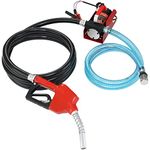
VEVOR Fuel Transfer Pump, 12V DC 10 GPM 26.2 ft Lift, Portable Electric Diesel Transfer Extractor Pump Kit with Automatic Shut-off Nozzle, Delivery & Suction Hose for Diesel, Kerosene, Transformer Oil
VEVOR

8.6
8

DeWay Fuel Transfer Pump for Gas Can with Manual Hand Trigger Nozzle | Fast 2.4GPM Flow Rate, 51” Heavy Rubber Hose, 4 AA Battery Power & 3 Adapters for Gasoline, Kerosene, Diesel & Non-Potable Water
DEWAY

8.3
9
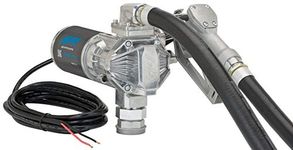
GPI G20 Fuel Transfer Pump, Manual Nozzle, 20 GPM Fuel Pump, 14' Hose, Adjustable Suction Pipe (162000-02)
GPI

8.1
10
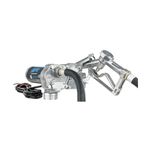
GPI M-150S-E Cast Aluminum Fuel Transfer Pump with Nozzle, 15 gpm, 1/5 HP, 1-Inch
GPI

7.8
A Guide to Selecting the Best Fuel Transfer Pumps
Choosing the right fuel transfer pump is important to ensure safe, efficient, and reliable movement of fuel from one container to another. Whether you need it for vehicles, machinery, or storage tanks, understanding the main features will help you select a pump that matches your needs and avoids problems like leaks, slow transfer, or compatibility issues. Start by thinking about what type of fuel you’ll be transferring, how often you’ll use the pump, and where you’ll be using it (indoors, outdoors, portable, or stationary).
Flow Rate
Flow rate tells you how quickly the pump can move fuel, usually measured in gallons per minute (GPM) or liters per minute (LPM). This is important because it affects how long it will take to transfer fuel. Lower flow rates (up to 10 GPM) are suitable for small jobs like refueling lawn equipment or small vehicles. Medium flow rates (10-20 GPM) are good for farm equipment or small fleets. High flow rates (over 20 GPM) are best for large vehicles, trucks, or industrial use. Choose a flow rate that matches the size of your fuel tanks and how quickly you need to complete the transfer.
Power Source
Fuel transfer pumps can be powered by electricity (AC or DC), batteries, hand cranks, or even air (pneumatic). Electric pumps are fast and convenient for frequent use, but need access to power. Battery-powered pumps are portable and good for remote locations. Hand pumps are simple, reliable, and don’t need power, but are slower and best for small amounts. Pick a power source based on where you’ll use the pump and how much fuel you need to move.
Compatibility with Fuel Type
Not all pumps can handle every type of fuel. Some are made for gasoline, others for diesel, kerosene, or even oil. Using the wrong pump can damage it or cause safety hazards. Always check that the pump materials (like seals and hoses) are compatible with the fuel you plan to transfer. If you use multiple types of fuel, look for a pump that is rated for all of them.
Portability
Portability refers to how easy it is to move the pump from place to place. Some pumps are lightweight and have handles, making them easy to carry, while others are designed to be mounted in one spot. If you need to move the pump between different tanks or locations, look for a portable model. If it will stay in one place, a heavier, mounted pump may be more durable.
Hose Length and Nozzle Type
The length of the hose and the type of nozzle affect how easily you can reach and control the fuel flow. Longer hoses are helpful for reaching awkward or distant tanks, but can be harder to store. Nozzles can be manual or automatic; automatic nozzles stop the flow when the tank is full, which helps prevent spills. Choose hose length and nozzle type based on your setup and how much control you want during fueling.
Safety Features
Safety features like automatic shut-off, grounding wires, and explosion-proof motors help prevent accidents and protect both the user and the equipment. These are especially important when working with flammable fuels. If you’re using the pump in a professional or high-risk setting, prioritize models with strong safety features.
Durability and Maintenance
Durability depends on the materials used in the pump and its ability to handle regular use and exposure to fuel. Pumps made with corrosion-resistant metals and quality seals last longer. Maintenance needs vary; some pumps require regular cleaning or part replacement. If you plan to use the pump often, look for a model known for reliability and easy maintenance.
Best Reviews Guide Newsletter
Get exclusive articles, recommendations, shopping tips, and sales alerts
Sign up for our newsletter to receive weekly recommendations about seasonal and trendy products
Thank you for subscribing!
By submitting your email address you agree to our Terms and Conditions and Privacy Policy
